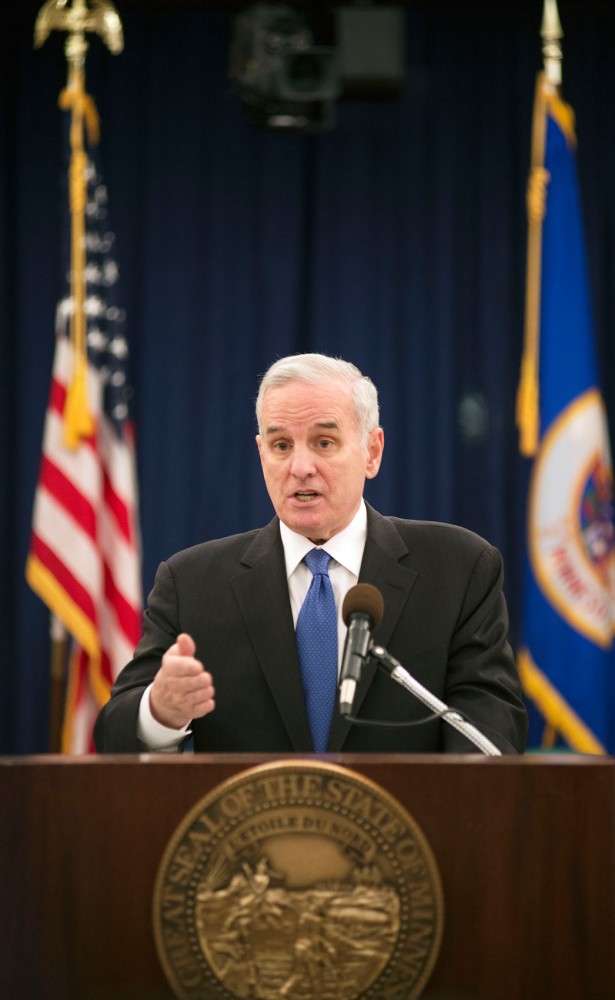The University of Minnesota isn’t backing off on its aggressive approach for state funding, despite an improved state budget prediction.
State finance officials announced Thursday that their deficit prediction, forecasted at $1.1 billion in November, is now expected to be $627 million, a 43 percent cut.
Richard Pfutzenreuter, the University’s chief financial officer, said even with the better forecast, the University needs to continue its constant presence at the Capitol as it asks for highly sought-after state dollars.
“All of that good news doesn’t really change the challenge that we face at the Legislature,” Pfutzenreuter said. “Revenues are better, but the state still has a shortfall, and there’s enormous competition for limited resources.”
Administrators at the University are petitioning for President Eric Kaler’s $1.2 billion biennial budget request that would keep tuition down for incoming Minnesota-resident undergraduates and further invest in other academic programs.
“We’re just going to have to keep pushing,” Pfutzenreuter said. “We can’t let up on the gas here.”
Depending on a data-driven, in-depth analysis of administrative costs that will be presented March 15, the likelihood of the budget proposal passing is uncertain.
Pfutzenreuter said the state’s economy is doing better because of prior investments made in higher education.
“It’s that highly educated workforce that is helping Minnesota,” he said. “You can see it. … Minnesotans are back working, paying taxes and the economy has improved.”
The forecast, crafted by Minnesota Management and Budget, offers relief for the current biennium with a positive balance of $295 million.
This is an opportunity for the state to look forward for the first time in a long time, said House Speaker Paul Thissen, DFL-Minneapolis.
Most of the current budget’s revenue is supposed to be paid back to the state’s school districts — money owed from previous budget deals.
The remaining funds from the positive balance are expected to go into the state’s budget reserve.
Gov. Mark Dayton is planning to revamp his budget plan, which was crafted based on the November forecast, to fit with the new predictions.
He didn’t say Thursday, however, that he would change his standing proposal to modify the state’s tax system — a plan backed by Thissen and other DFLers.
“I do still think strongly that we have to go through this exercise of tax reform to position Minnesota better in the future,” said Senate Majority Leader Tom Bakk, DFL-Cook.
The governor’s plan would increase income taxes for the wealthiest Minnesotans and expand the base of the state’s sales tax, as well as other changes.
House Minority Leader Kurt Daudt, R-Crown, who disagrees with the proposed changes to the state’s tax system, said the governor’s plan needs not just revisions, but a complete overhaul.
The policies Dayton has proposed would tax middle class people and “be devastating to Minnesota’s economy,” he said.
Other options for reform are limited, Dayton said, and the discussion will continue to create a budget plan that “will be most effective to continue the positive track” that the state is on.
Investment priorities, like education and job development, are steadfast and won’t change, he said.
The governor’s budget allocates $240 million more for higher education, with $80 million for the University.
A modified budget proposal from Dayton is expected to be released in the coming weeks, and legislators will introduce a final plan by mid-May.








